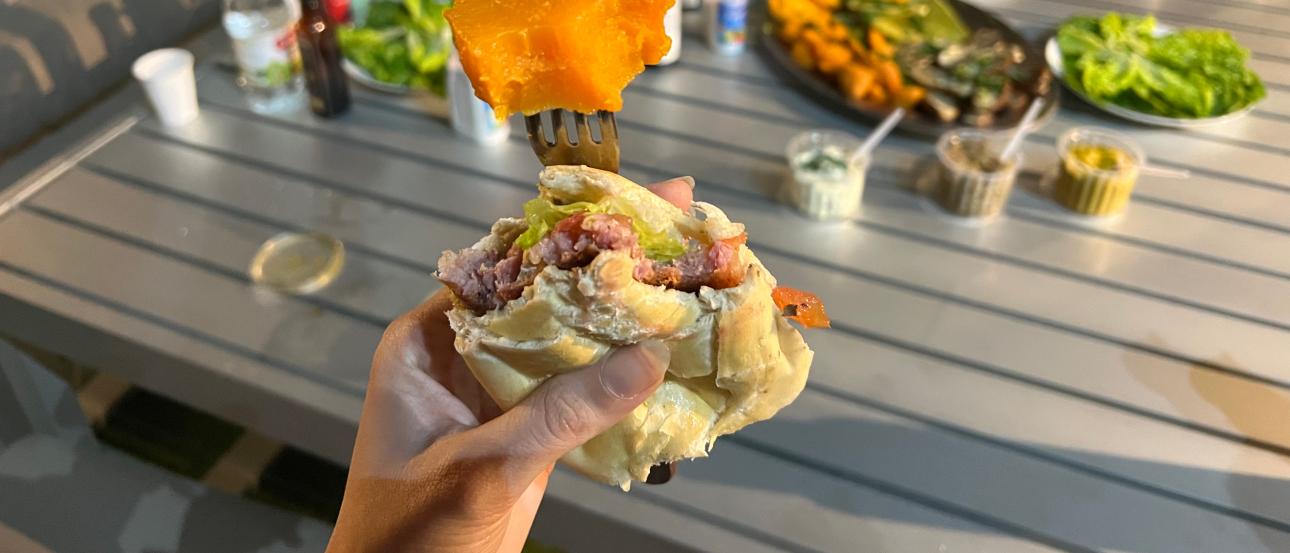The first time I went grocery shopping in Buenos Aires I left the supermarket after 45 minutes with a bag of spinach, half a baguette, and a tub of hummus. I spent the next week dipping my bread in the hummus and eating dry salads for lunch. In the first few weeks, walking into an entirely unfamiliar store, in an entirely unfamiliar city, filled with foods labeled in a language I barely understood, felt like a nearly impossible task. I could spend hours just wandering the aisles trying to decipher the differences between the 15 types of ham and unsuccessfully searching for feta cheese (which I later found labeled queso Griego but is so expensive that I refuse to buy it here). There are a lot of things about grocery shopping in the city that I still haven’t figured out, but I did come back with three rolls of bread, ham, cheese, and salad ingredients tonight, so I think I’ve improved. Here are a few things I’ve learned over the past couple of months:
- Go in with a loose idea of what you need but know that nothing will look like what you’re used to. Going in totally blind was my mistake the first time I went grocery shopping and how I ended up with no ingredients that went together. At the same time, the search for feta lasted so long because I was overly attached to the idea of finding the exact foods I wanted.
- Pick your store accordingly. There are a lot of options for grocery shopping in Buenos Aires, and you should know where to go for the things you want. If you’re looking for fruits and vegetables, it’s usually best to shop at one of the smaller verdulerias which specialize in produce. There are also a lot of small corner stores which can be good to pop into for a couple of quick groceries or snacks, and the health food stores which will usually have more specialty items and organic/veggie/gluten-free options. Then there are the bigger supermarkets: Día, Coto, Carrefour, Jumbo. These stores will have more options and are a good place to go for a bigger grocery run.
- Milk comes in bags. Eggs are unrefrigerated. A lot of the yogurt is liquid consistency.
- Ask for recommendations! If you’re not sure what something is, or you want to know which cheese would go best in a salad, just ask. People are usually happy to help, and you won’t have to make so many guesses about what you’re buying. Also, it’s good Spanish practice.
- A few things that are probably going to be difficult to find: deli meat (other than ham), anything spicy, certain cheeses, tequila.
- Try things out. You’re not going to know which brand of yogurt is your favorite or what kind of crackers you like unless you try a lot of different things. You’ll have to go through some bad to get to the good, but it’s also a lot of fun to try things with no idea what you’ll find.

Isabel Rameker
I'm a junior sociology and anthropology major at Carleton College in Minnesota. I'm also a prospective Spanish minor and I'm both excited and nervous to dive into a semester of Spanish immersion in Argentina. Although I go to school in a small town, I love cities and am endlessly fascinated by their different cultures and dynamics, so I'm especially excited to be living in Buenos Aires this fall. At school, I play club frisbee and write for my college's news site, and in my free time, I love to lounge with a good book, cook meals with my housemates, and enjoy the outdoors.




